
Bioremediation: healing the land, the air, and the water
If you are interested in healing damage to the environment, bioremediation is a fascinating subject.
As an ecosystem restoration expert, working on designs for landscapes, farms, and gardens all over the world, I am amazed by nature’s capacity to heal itself in a range of incredible ways. Sometimes, however, we need to give nature a helping hand, working with natural processes and organisms to heal the harm our species has done.
In this article, I hope to introduce the options we have for ‘fixing’ pollution problems. I’ll share some examples of bioremediation and talk about how it can be used to clean up problems in your own community or on your own property – healing the land, air, and water locally and on a larger scale, step by step.
What is Bioremediation?
Bioremediation is the process of using living plants or micro-organisms to clean up contaminated air, soil, or water.
Humanity can make quite a mess – but by harnessing natural processes, and with the help of specific plants, fungi, and bacteria, we can also begin to turn things around and clean things up. In this way, we can sequester greenhouse gases and clean the air; combat polluted soils; and work to preserve fresh water and combat water contamination.
Below, you will find a range of examples of bioremediation. You will also learn how certain methods can be employed by your community or in your garden.
Identifying Issues at Home or in Your Community
If you are interested not only in learning more about this concept but also about applying biomediative methods in your own garden, one of the first steps is to identify any known or potential issues with the air, soil, or water there.
Air pollution is relatively easy to identify. If you live in an urban area, you are no doubt aware that the local air quality is poor or, at the very least, leaves something to be desired. Improving air quality in your area would require a multi-faceted approach. However, there are steps you can take to make a difference, either in your community or in your garden.
Issues with soil may not always be so easy to discern. However, if you know the history of the site, you may be able to identify areas of concern. If your garden (or other site) has been used for industry, non-organic agriculture or farming, or other polluting activities, soil testing may enable you to identify issues that could prevent you from fully making the most of the site. Heavy metals and other soil contaminants might have an impact on future growth, so it is beneficial to tackle them head-on. As you will discover below, it is often possible to repair damage and restore healthy soil using natural processes.
In an organic garden, collect rainwater wherever possible. However, if you live under a flight path or in a particularly urban area, this water may not be as clean and pure as you imagine. Preventing run-off from hard surfaces, and filtering water in natural ways, can help ensure your rainwater is safe to use around edible plants, and help prevent contamination of waterways, seas, and oceans.
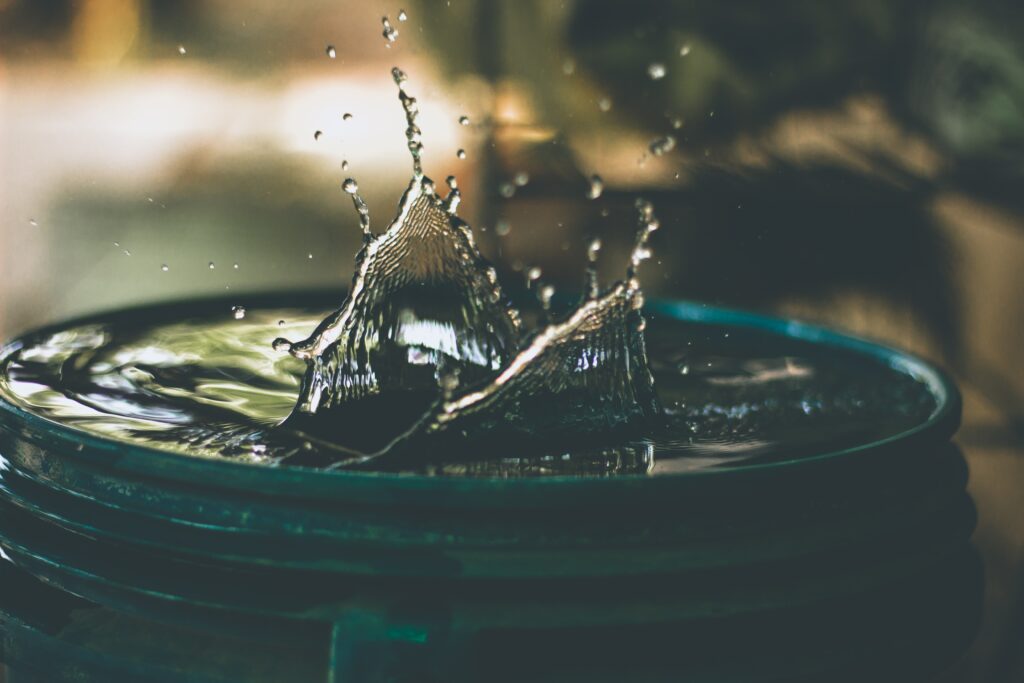
Determining whether the water you collect is contaminated is the first step of the process, while understanding how to filter and clean water can also help you develop other sustainable strategies at home.
Air: Biological Carbon Capture and Tackling Air Pollution
Cleaning our air means, first of all, looking at greenhouse gases on a global scale. While the best solution would be to cease emissions, carbon capture is an important part of limiting Anthropocene climate change.
Biological Carbon Capture
Carbon is sequestered in ecosystems, both within plants and in the soil (which is itself predominantly made up of plant material). For this reason, the preservation and restoration of forests and other ecosystems like wetlands is crucial to mitigating climate change.
To avoid a temperature rise of more than 1.5 degrees Celsius above pre-industrial levels, there must be an increase in global forest cover of 10 million square kilometres (3.9 million square miles; an area the size of Canada) by 2050. Reforestation and afforestation are crucial means of natural carbon capture – a type of bioremediation.
Wetlands, like forests, are crucial carbon sinks, helping to keep greenhouse gases out of the air. Globally, intact peat soils contain more than 600 gigatonnes of carbon – up to 44% of all soil carbon, which exceeds the carbon stored in all other vegetation types, including the world’s forests and near-natural peatland, which sequesters 0.37 gigatonnes of CO2 annually.
Therefore, wetland protection and restoration, and the creation of new wetland areas, can also be considered a type of bioremediation (both for carbon capture and filtration of polluted water, as you will discover later).
A range of intact ecosystems are crucial not only for carbon capture, but also to mediate pollution issues in a range of other ways.
Tacking Industrial Emissions with Biofiltration
Experimentation shows that emissions can be captured in several ways at a factory level using biological means. The Algoland carbon-capture project is one example which shows how harnessing photosynthesis can capture carbon from industry.
Microalgae are being sought as effective biofactories for both the sequestration of CO2 and the simultaneous production of renewable biofuels, food, animal and aquaculture feed products, and other value-added products such as cosmetics, nutraceuticals, pharmaceuticals, bio-fertilizers, and bioactive substances. For example, Drax power station in the UK is investigating turning CO2 into food for fish. Seaweed is also being explored for its potential to sequester carbon at biorefinery sites.
Bioremediation can also involve using micro-organisms to remove other sources of atmospheric pollution. In many factories, biofiltration is now used in place of chemical scrubbing to remove volatile organic compounds (VOCs) from industrial emissions.
Micro-organisms living in a replaceable culture medium degrade contaminants into carbon dioxide, water, or salts. This is the only biological technique currently available to remediate airborne pollutants.
A range of enzymatic processes can also be used within industrial processes to reduce the number of harmful pollutants produced within a factory system. (Enzymes have even been discovered which could help to combat other forms of waste – including one which breaks down plastic.)
Reducing Air Pollution in Cities
In the wider environment – in cities and around industrial sites – other biological solutions can help clean the air. For example, to a degree, planting more trees can help to reduce air pollution. In fact, re-greening our cities with any vegetation can help.
Mosses are particularly effective tools in measuring atmospheric pollution. Certain species are considerably better at accumulating heavy metals than tree leaves; they can absorb nitrogen oxide, ozone, and particulate matter (fine dust), offsetting many tonnes of CO2 equivalents per year. This has led to the invention of the CityTree: a fine dust moss filter already in use in Norway, France, Germany, Belgium, the UK, Macedonia, and Hong Kong.
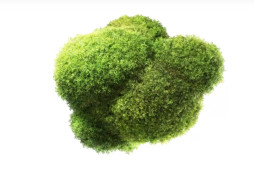
One CityTree filter is said to be equivalent to 275 trees – not only sequestering carbon, but also ridding city air of other harmful substances. Placing these structures around cities and close to industrial sites will help clean the air that we breathe.
Tackling Air Pollution at Home, Step by Step:
Tackling air pollution – both in terms of greenhouse gas sequestration and local air pollution – should be a priority for conscientious gardeners.
Take Steps to Sequester Carbon in Your Garden
Carbon gardening is about maximising natural carbon uptake and storage in the space you manage. Even in a small domestic garden, you can make more of an impact than you might imagine.
Step 1: Plant Trees
Many people are well aware that trees take in carbon dioxide, breathe out oxygen, and keep carbon locked up in their trunks, branches, and roots, until they are felled or burned and the carbon returns to the atmosphere. So, when people think of carbon sinks, trees are what spring to mind. Indeed, all trees sequester carbon to a degree, but the extent depends on their age, species, and on environmental factors like temperature.
A common saying states that the best time to plant a tree is twenty years ago, but that the next best time is today. When it comes to capturing carbon in your garden, this adage really holds true. Most trees sequester the highest amounts of carbon when they are in their ‘teenage’ years (between 10 to 45 years after planting), though the process will begin right away, and continue into old age.
Planting one or more trees in your garden is great not only for carbon capture, but for many other reasons too. But which trees should you choose? Carbon-capture schemes often favour younger trees because they grow more quickly, capturing carbon at a faster rate – however, though slower-growing trees capture carbon at a slower rate, they do so over a longer period. Therefore, from an environmental standpoint, the best strategy is generally to plant a number of species, to maximise both short and long term sequestration.
Another very important factor when choosing trees is how useful they are to us. The more useful, the more likely they are to be left to grow and sequester carbon over a longer period of time. Fruit and nut trees are therefore often excellent choices for a domestic garden. Trees that can be coppiced for fuel, timber, or crafting materials can also be good choices, as they will also be able to continue growing and capturing carbon while delivering a yield.
However, planting only trees is not the most effective way to sequester carbon in your garden.
Step 2: Create Thriving Ecological Systems
With careful planning and planting, even a small garden can be turned into a thriving and abundant forest garden or a native ecosystem scheme; layers of planting will capture and store more carbon. Remember, the more plants in your garden, the more carbon will be stored.
Shrubs and hedge plants are often overlooked when it comes to carbon capture. But whether or not you have space for trees, you likely have some space for these smaller woody plants. You could consider incorporating them as a lower layer in a forest garden, in a bed or border, or as part of a hedge along the boundary of your property. Careful design and management of a mixed hedgerow system is another way to improve overall carbon sequestration in your garden.
All plants capture carbon to some degree, but perennial plants are crucial in carbon gardening. Perennials are plants that grow in your garden and capture carbon year after year, not just for a season or two (like annuals and biennials). In addition to planting trees and shrubs, carbon gardeners should also plant plenty of herbaceous perennials.
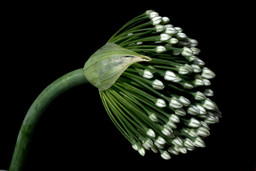
Perennial flowers, vegetables, and herbs all play key roles in a forest garden, and in other eco-friendly garden schemes. Those with deep, woody roots are particularly useful in carbon management, as they will generally remain in place for years to come, helping to keep carbon locked up below the soil.
Typically, annuals have lower root biomass than perennials because they do not need to store energy in the same way. On average, plants allocate 76% of carbon stocks to shoots and only 24% to the roots – but this can vary considerably according to differing climatic and environmental conditions. Therefore, opting to grow fewer annual plants and more perennials is usually preferable.
Step 3: Capturing Carbon in the Soil
Though the plants you choose are crucial, the most important element for capturing carbon in a garden is the soil. Soils around the world hold four times the amount of carbon stored in the atmosphere, and more than is held in global vegetation; it is an effective global carbon sink, offsetting a significant proportion of human-caused carbon dioxide emissions.
For this reason, the most effective strategies for carbon sequestration in gardening involve considering how we protect, nurture, and manage the soil.
Managing soil carbon involves two main strategies:
- Reducing carbon loss from the soil
- Increasing carbon gains by adding organic matter.
To reduce carbon losses from the soil, gardeners can:
- Adopt a ‘no-dig gardening’ approach
- Avoid leaving areas of bare soil
- Take steps to minimise and prevent compaction and erosion.
To increase levels of organic carbon within soil, gardeners can:
- Add ‘green organic matter’ as green manures, or use cover crops that are chopped and dropped or laid as mulch
- Add ‘brown organic matter’, such as compost or manure
- Incorporate ‘black organic matter’ into the soil
- Manage soil organically, in order to protect its ecosystem and boost bacterial and fungal life
- Rotate annual crops where these are grown, and plant as diversely as possible.
Reduce Local Air Pollution
Reducing local forms of air pollution in your garden can also be achieved through the planting scheme you choose; incorporating as many different trees, shrubs, and other perennial plants as possible can help to clean the air around your garden.
As mentioned above, growing mosses can be particularly effective in mitigating air pollution. You could encourage its growth by spreading a yogurt moss solution on rocks, etc.
Trees and other plants also filter atmospheric pollutants like sulphur dioxide and nitrogen dioxide through their leaves, and are also good at removing fine particulates which pose a risk to human health. But, when planting trees, etc, note that certain species are better at withstanding air pollution or are more effective at removing contaminants from the air.
Different species’ filtering performance depends mostly on canopy size and leaf size and structure. The larger a tree’s leaves or canopy, the greater the surface area, meaning they can trap more pollutants and particulate matter; for the same reason, rough, rugged, and hairy leaves are the best filters.
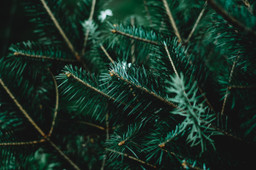
In a UK study, silver birch, yew, and elder were rated best for filtering performance, while a different study, in Beijing, found pines and cypresses to be among the best, outdoing species more frequently planted in cities. Conifers, the London plane tree, silver maple, and honey locust also scored above average. However, there are many factors to consider; conifers, for example, may not always be well suited to city sites.
Choosing trees for the remediation of high air pollution can be a challenging and complex business. Some trees can emit high levels of VOCs, for example. Another complication is the importance of precisely where trees are planted; in the wrong places, they can trap air pollution close to the ground in built-up areas.
Some suggestions to guide tree-planters can be found here.
Soil: Decontaminating with Plants or Fungi
Phytoremediation
Using plants for bioremediation is known as phytoremediation. We’ve spoken about how intact ecosystems such as forests and wetlands can sequester carbon and mitigate pollution. But, in addition to thinking about whole ecological systems, we can also use specific plants to tackle and remove pollutants.
For example, hyperaccumulator plants can be grown on polluted sites to extract heavy metals and other pollutants from the soil. By recognising the ability of certain specific plants to accumulate toxic substances, landscapes that have been polluted can be restored.
Mycoremediation
Certain mushrooms can also be used in ecosystem restoration and bioremediation; this is often referred to as mycoremediation. Many reports have been published which emphasise the role of mushrooms in the bioremediation of wastes through the processes of biodegradation, biosorption, and bioconversion.
Tackling Soil Contamination at Home, Step by Step
While the bioremediation of severely polluted soils is a challenging topic, and one best left to the experts, domestic gardeners can also consider taking on soil contamination in their gardens by using certain plants.
Step 1: Undertake Soil Tests and Analysis
Contaminated soil cannot be successfully cleaned unless soil tests have been undertaken and their analyses have been reviewed. So, the first step is to test the soil to establish which contaminants are a problem.
Step 2: Choose Plants to Clean Up Contaminated Sites
Once the analysis has been completed, gardeners may be able to take things into their own hands, for example, by establishing specific plants chosen for their ability to absorb certain toxic substances.
For example, particular brassica species, especially Brassica juncea L., are good at accumulating particular heavy metals. Interestingly, this species was also used to help clean up after the nuclear disaster at Chernobyl. So too were sunflowers, which have also been shown to help in accumulating a wide range of contaminants.

Similarly, willow trees help absorb heavy metals and diesel spills, while poplars are successfully used in bioremediation.
By extracting sodium chloride (salt), barley can be used to reclaim fields which have been flooded by seawater, while, alongside earthworms, it can cleanse agricultural soil contaminated with lead.
Step 3: Disposal of the Hyperaccumulator Plants
Since these plants are dynamic accumulators, good at gathering certain pollutants, they take much of the toxic load with them when removed from the soil. Disposing of them means disposing of the pollutants they contain.
Step 4: Retest the Soil
Once the plants have been removed, the soil should be retested, to determine whether the phytoremediation has been successful.
Step 5: Begin to Rebuild Soil Health
If the process has been successful, the next phase will involve making further plant choices, and taking other steps to continue to rebuild soil health, such as mulching.
Water: Cleaning Groundwater and Rainwater Filtration
Bioremediating Water Pollution with Bioreactors
Bioremediation using micro-organisms in bioreactors is increasingly being used in the decontamination of polluted water.
In-situ Groundwater Bioremediation
Soil and groundwater can also be decontaminated with in-situ bioremediation methods using bacteria and fungi. Micro-fauna such as nematodes and protozoa are also being investigated for their ecological functions’ potential for bioremediation of contaminated soils.
Runoff Catchment
Water can also be cleaned through the use of reedbed filtration systems, rain gardens, and constructed wetland systems. Vegetated swales and other hydrological landscape-management features can take runoff from hard surfaces like roads and prevent the contamination of surrounding ecosystems. These methods can be applicable at a community level and in individual gardens.
Water Filtration at Home
There are several ways plants or other bioremediation techniques may be used to clean or filter water at home.
Create Filtration for Rainwater Harvesting and Greywater Systems
Rainwater can be filtered for use in the garden in a number of ways – it can even be made potable through filtering. Water from roofs or driveways, or greywater (domestic wastewater) from sinks and washing machines within the home, can be cleaned through bioremediation with the use of plants and soil as filters.
A relatively simple biofiltration system which can be created at home uses a reedbed or constructed wetland system. There are a number of different approaches, but all work by using the plants and micro-organisms found naturally within the system to clean waste water. Some former guidelines from the UK, detailing commonly used plants and other details, can be found here.
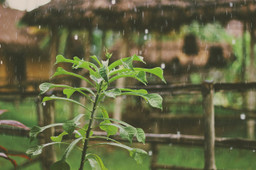
Where greywater contains food waste, woodchip biofilters are sometimes used before water is sent to a reedbed or wetland system. This is a box filled with woodchips with a drain at the bottom, which filters out grease and food debris from a kitchen sink. A mulch basin is more or less the same, but on a larger scale, and is lower maintenance than a woodchip filter, where the woodchips must be regularly replaced.
Systems vary from very simple to far more complex filtration systems that can cost a lot of money. The type of system you need will depend on how and where you would like to use greywater; outflow from a reedbed or constructed wetland system can be used in your garden in a range of ways.
While you can certainly take a DIY approach, it is usually best to consult an expert to ensure that your system works as you wish.
Create a Rain Garden to Catch Runoff
A rain garden is a basin planted with specific plants (usually native species) which can cope with fluctuating water levels, including flooding and drier periods.
This option prevents polluted runoff from entering the local surroundings, by directing it to a rain garden. Properly filtered greywater can be sent to a rain garden-type area, where plants and micro-organisms in the soil will purify it.
There are a number of benefits to creating a rain garden. One is that the plants and soil naturally filter and clean rainwater which has fallen on roofs and driveways, possibly picking up a range of contaminants. Allowing this water to simply flow off of your property can cause pollution problems in rivers, other waterways, and seas and oceans.
The Royal Horticultural Society (RHS) gives some guidance for rain gardens here. And for further inspiration, you may like to check out another brief article of mine here.
Healing the Land, the Air, and the Water
As you can tell from the above, bioremediation is a hugely complex topic, and scientists are still learning a lot about it year on year. Nevertheless, successful bioremediation schemes around the world, on both large and small scales, show that it is possible for humanity to heal much of the damage we are doing and have done.

While governments, businesses, and other sectors need to play their part, as individuals, we can also make our own contributions to putting things right. By investigating this topic, and perhaps taking small steps at home or contributing to projects in your community, you can play your part.
Earth.fm is a completely free streaming service of 1000+ nature sounds from around the world, offering natural soundscapes and guided meditations for people who wish to listen to nature, relax, and become more connected. Launched in 2022, Earth.fm is a non-profit and a 1% for the Planet Environmental Partner.
Check out our recordings of nature ambience from sound recordists and artists spanning the globe, our thematic playlists of immersive soundscapes and our Wind Is the Original Radio podcast.
You can join the Earth.fm family by signing up for our newsletter of weekly inspiration for your precious ears, or become a member to enjoy the extra Earth.fm features and goodies and support us on our mission.
Subscription fees contribute to growing our library of authentic nature sounds, research into topics like noise pollution and the connection between nature and mental wellbeing, as well as funding grants that support emerging nature sound recordists from underprivileged communities.
